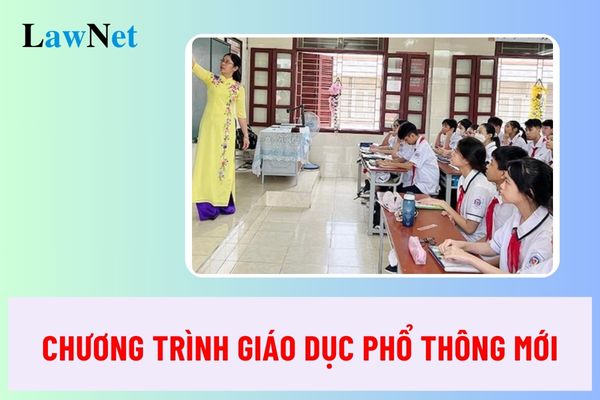What are grades that follow the General Education Program 2018 in the 2024–2025 school year in Vietnam?
What are grades that follow the General Education Program 2018 in the 2024–2025 school year in Vietnam?
According to the provisions of Article 2 of Circular 32/2018/TT-BGDDT:
The general education program will be implemented according to the following schedule:
1. From the 2020-2021 school year for grade 1.
2. From the 2021-2022 school year for grades 2 and 6.
3. From the 2022-2023 school year for grades 3, 7, and 10.
4. From the 2023-2024 school year for grades 4, 8, and 11.
5. From the 2024-2025 school year for grades 5, 9, and 12.
Thus, the General Education Program 2018 will apply to students from grades 1 to 12 in the 2024-2025 school year.

What are grades that follow the General Education Program 2018 in the 2024–2025 school year in Vietnam? (Internet image)
How many specific competencies do students have according to the General Education Program 2018 in Vietnam?
According to the Curriculum issued with Circular 32/2018/TT-BGDDT, students have 7 specific competencies under the General Education Program 2018. Specific competencies are also components of core competencies for students.
The 7 specific competencies include:
- Language competence
- Mathematical competence
- Scientific competence
- Technological competence
- Informatics competence
- Aesthetic competence
- Physical competence
What are the requirements for specific competencies for students?
According to Section 9 of the Curriculum issued with Circular 32/2018/TT-BGDDT, the requirements for students’ specific competencies are as follows:
(1) Language competence
- The language competence of students includes the ability to use Vietnamese and foreign languages; each competence is demonstrated through activities: listening, speaking, reading, and writing.
- The requirements for language competence for each grade and education level are stipulated in the Literature and Foreign Language programs and are implemented in all subjects and educational activities, fitting each subject's and activity's characteristics, with the main subjects being Literature and Foreign Languages.
(2) Mathematical competence
The mathematical competence of students is demonstrated through the following activities:
- Understanding mathematical knowledge;
- Mathematical thinking;
- Applying learned knowledge and skills.
Mathematical competence is formed and developed through many subjects and educational activities, fitting each subject's and activity's characteristics. The most concentrated demonstration of mathematical competence is mathematical competence itself, formed and developed mainly in the Math subject. The requirements for mathematical competence for each grade and educational level are stipulated in the Math program.
(3) Scientific competence
The scientific competence of students is demonstrated through the following activities:
- Scientific understanding;
- Exploring nature, exploring society;
- Applying learned knowledge and skills.
Scientific competence is formed and developed through many subjects and educational activities, fitting each subject's and activity's characteristics, with the main subjects being:
Natural and Social Studies, Science, History, and Geography (at the primary level); Natural Science, History, and Geography (at the lower secondary level); Physics, Chemistry, Biology, History, Geography, Economic and Legal Education (at the upper secondary level).
Each subject's programs and educational activities help students develop scientific competence at increasingly specialized levels through different educational levels (scientific competence; natural science competence, social science competence; physics competence, chemistry competence, biology competence; history and geography competence, history competence, geography competence).
The requirements for scientific competence for each grade and education level are stipulated in the programs of subjects like Natural and Social Studies, Science, History, and Geography (at the primary level); Natural Science, History, and Geography (at the lower secondary level); Physics, Chemistry, Biology, History, Geography, Economic and Legal Education (at the upper secondary level).
(4) Technological competence
The technological competence of students is demonstrated through the following activities:
- Understanding technology;
- Technological communication;
- Using technology;
- Evaluating technology;
- Technical design.
The requirements for technological competence for each grade and educational level are stipulated in the Technology subject program and are implemented in many subjects and educational activities, fitting each subject's and activity's characteristics, with Technology being the main subject.
(5) Informatics competence
The informatics competence of students is demonstrated through the following activities:
- Using and managing information and communication technology tools;
- Appropriate behavior in the digital environment;
- Solving problems with the support of information and communication technology;
- Applying information and communication technology in learning and self-learning;
- Collaborating in a digital environment.
The requirements for informatics competence for each grade and educational level are stipulated in the Informatics subject program and are implemented in all subjects and educational activities, fitting each subject's and activity's characteristics, with Informatics being the main subject.
(6) Aesthetic competence
The aesthetic competence of students includes musical skills, artistic skills, literary skills; each competence is demonstrated through the following activities:
- Recognizing aesthetic elements;
- Analyzing and evaluating aesthetic elements;
- Reproducing, creating, and applying aesthetic elements.
The requirements for aesthetic competence for each grade and educational level are stipulated in the programs of subjects like Music, Art, Literature, and are implemented in many subjects and educational activities, fitting each subject's and activity's characteristics, with the mentioned subjects being the main ones.
(7) Physical competence
The physical competence of students is demonstrated through the following activities:
- Health care;
- Basic movements;
- Physical exercises and sports activities.
The requirements for physical competence for each grade and educational level are stipulated in the Physical Education subject program and are implemented in many subjects and educational activities, fitting each subject's and activity's characteristics, with Physical Education being the main subject.

